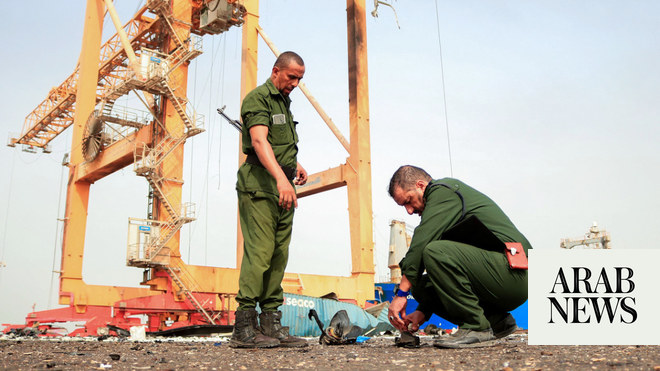ATHENS/QAMISHLI, Syria: Starting in 2022, senior Syrian and Turkish officials will meet regularly in Moscow for talks brokered by Russia. But these meetings failed to result in a thaw in their icy relations.
However, it is a different matter now that Turkish President Recep Tayyip Erdogan has announced his desire to restore formal relations with his Syrian counterpart, Bashar al-Assad.
Earlier this month, he said he could invite Assad to Turkey “at any time”, to which the Syrian leader replied that any meeting would depend on the “content”.
Ankara and Damascus cut diplomatic ties in 2011 following the outbreak of the Syrian civil war. Relations have since remained hostile, especially as Turkey continues to support armed groups opposed to the Assad regime.
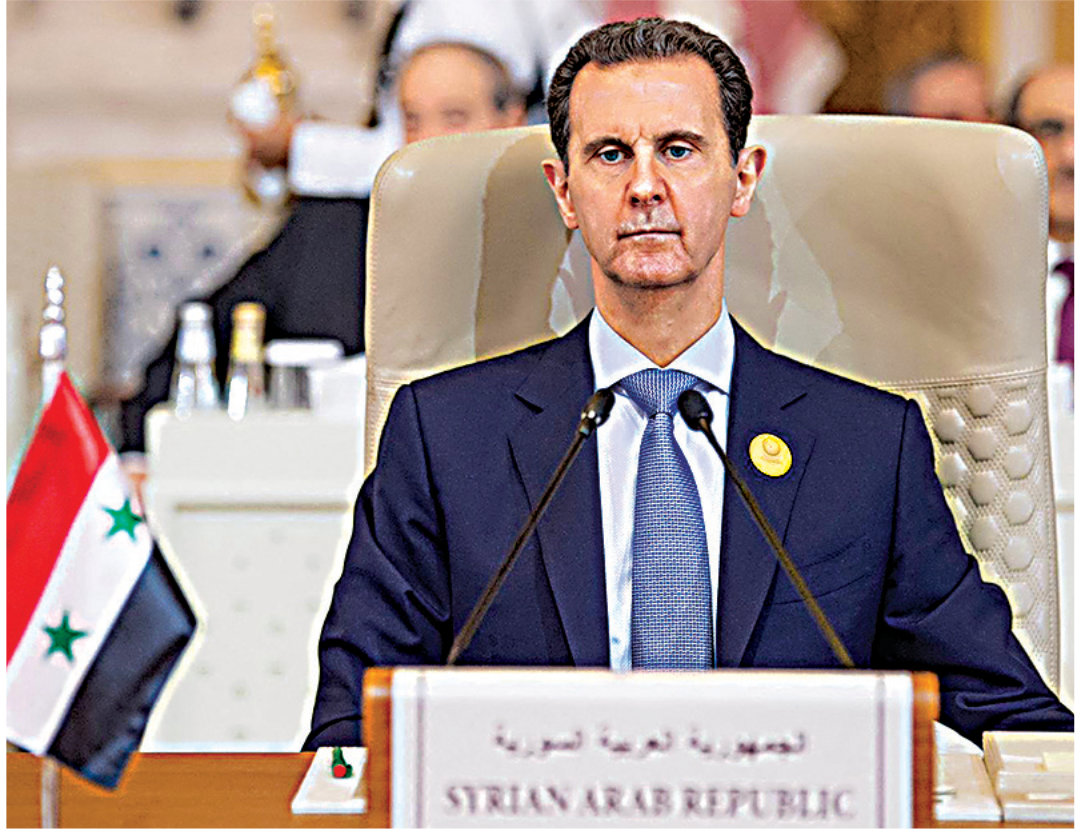
Since the outbreak of the civil war in 2011, Turkey has supported armed Syrian factions in their fight against the regime of President Bashar al-Assad. (AFP)
So what is the motivation to change course now? And what are the likely consequences of Turkish-Syrian normalization of ties?
Syrian writer and political researcher Shoresh Darwish believes that President Erdogan is seeking normalization for two reasons. “The first is preparation for the possibility of the arrival of a new US administration headed by Donald Trump, which means the possibility of a return to the policy of (US) withdrawal from Syria,” he told Arab News.
“Therefore, Erdogan will have to cooperate with Assad and Russia.”
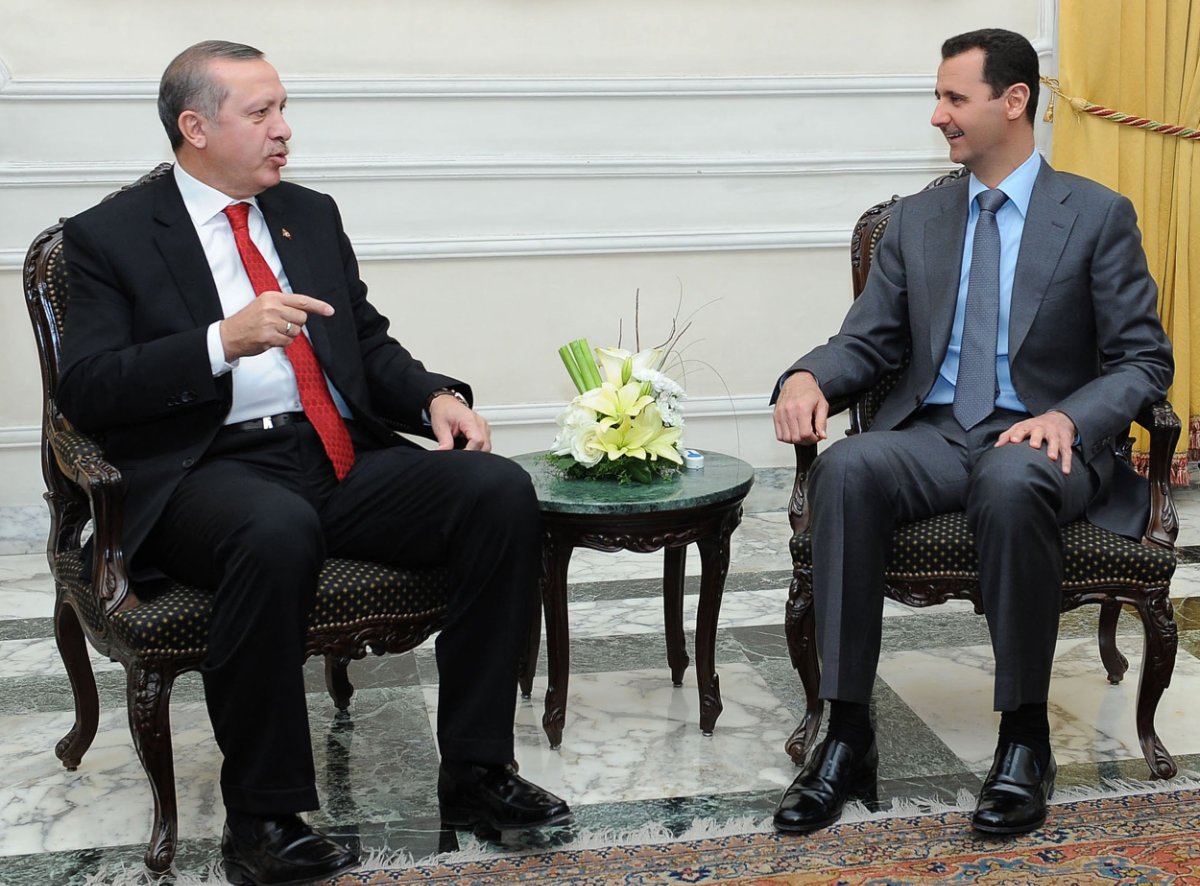
This photo released by the Syrian Arab News Agency shows President Bashar al-Assad (R) meeting with then-Turkish Prime Minister Recep Tayyip Erdogan in Aleppo. (SANA/AFP)
The second reason, Darwish says, is Erdogan's desire to get closer to the Syrian regime's ally Russia after Turkiye moved toward the US after the war in Ukraine broke out. As a NATO member state, the conflict has complicated Turkey's normally balanced approach to its ties with Washington and Moscow.
“Ankara's cooperation with Moscow is difficult from the point of view of the Ukrainian issue,” Darwish said. “As a result of significant Western interference in this issue, their cooperation in Syria is a rallying point through which Erdogan wants to emphasize his friendship with Putin and Moscow's interests in the Middle East.
Those in the northwest controlled by the Syrian opposition, which supports Turkiye, see the rapprochement between Ankara and Damascus as a betrayal.

Demonstrators in opposition-held Idlib and rural Aleppo wave flags of the Syrian revolution and hold signs reading: 'If you want to get closer to Assad, congratulations, the curse of history is upon you.' (photo by Ali Ali)
During one of several protests in Idlib since early July, protesters held signs in Arabic that read: “If you want to get closer to Assad, congratulations, the curse of history is upon you.
Abdulkarim Omar, a political activist from Idlib, told Arab News: “Western Syria, Idlib, rural Aleppo and all areas belonging to the opposition completely reject this behavior because it is only in the interest of the Syrian regime.
“The Syrian people came out 13 years ago and rose up in their revolution demanding freedom, dignity and the building of a civil, democratic state for all Syrians. This can only be achieved by overthrowing the tyrannical Syrian regime represented by Bashar al-Assad. They still cling to this principle and these slogans and cannot abandon them.”
Those living in areas controlled by the Kurdish-led and US-backed Autonomous Administration of North and East Syria, or AANES, which holds much of Syria's territory east of the Euphrates River, are also wary of the consequences of normalization.
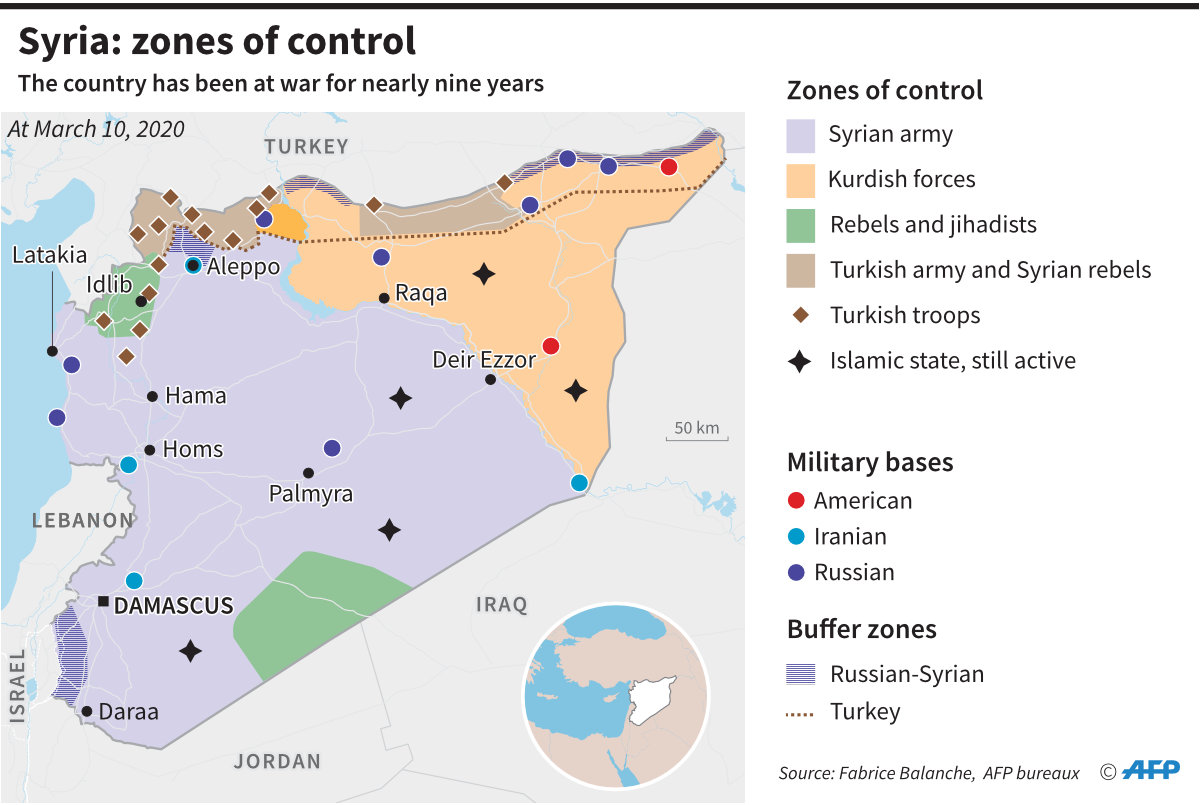
Map of Syria showing the zones of control of the various participants at the end of 2020. Some cities then under the control of the Kurdish-led Syrian Democratic Forces have been captured by Turkish forces. (AFP/File)
“There is concern among the population that reconciliation may be a prelude to punishing the Syrian Kurds for their political decisions,” Omar said.
Incursions into Syria between 2016 and 2019 resulted in Turkiye taking control of several cities, many of which were previously under AANES control.
Turkey's justification for its 2018 and 2019 invasions and continued presence on Syrian territory was to create a “safe zone” between it and the armed forces of the AANES – Syrian Democratic Forces.

A member of the Syrian Kurdish Asayish security forces stands guard as mourners march during the funeral of two Kurdish women killed in a Turkish drone strike in Hasakah, northeast Syria June 21, 2023. (AFP)
Turkiye considers the SDF to be the Syrian wing of the Kurdistan Workers' Party, or PKK, a group that has been in conflict with the Turkish state since the 1980s.
“Of course, the Syrian Kurds know that they will be part of any deal that Erdogan wants to make with Assad,” Darwish said. “The issue unnerves Syrian Kurds, who see Turkey as ready to do anything to harm them and their experience of self-government.
Darwish says the Syrian Kurds would accept reconciliation on three conditions. First, they would like to see the Turks remove their troops from Afrin and Ras Al-Ain. Second, an end to Turkish strikes against the AANES areas. And third, a guarantee from the Assad regime “that the Syrian Kurds will enjoy their national, cultural and administrative rights.”
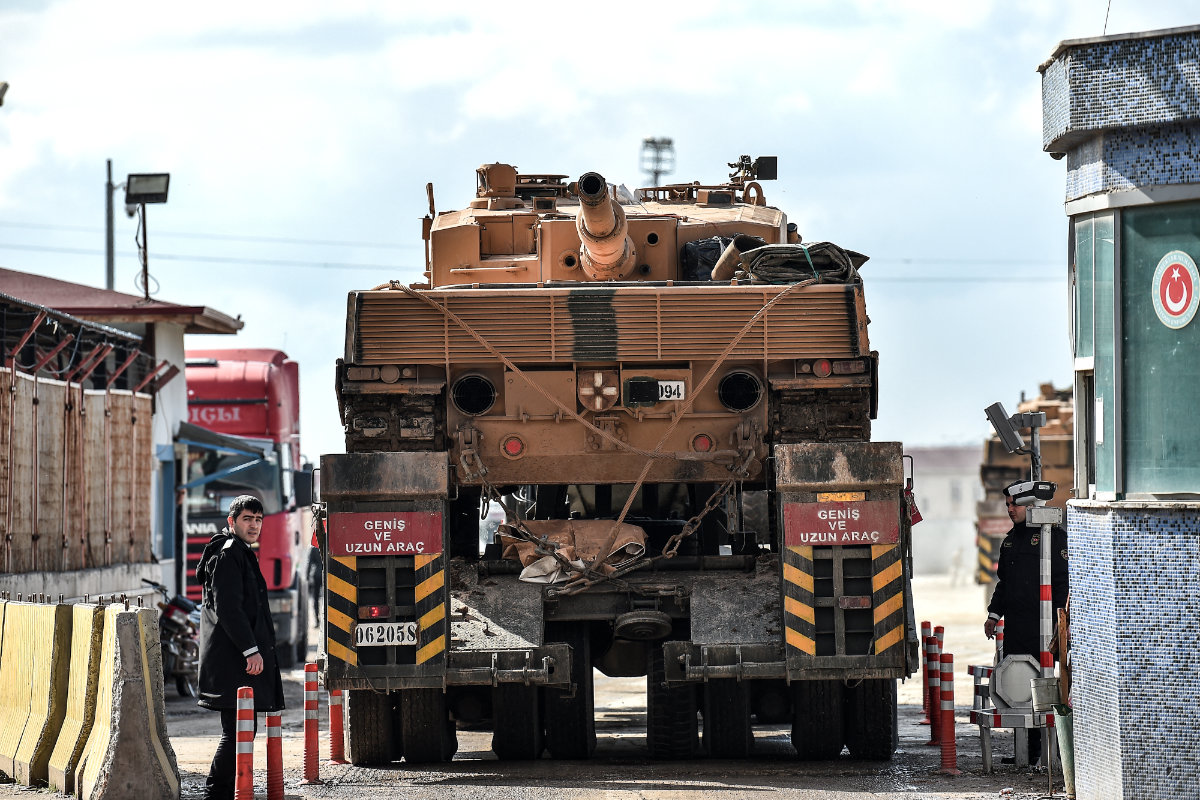
In this photo taken on January 27, 2018, a Turkish military convoy passes through the Oncupinar border crossing as soldiers enter Syria during a military campaign in the Kurdish-held Syrian enclave of Afrin. (AFP/File)
But how likely is a rapprochement between Ankara and Damascus? Not much, according to conflict analyst and UNHRC delegate Thoreau Redcrow. “I consider the prospects of Erdogan and Assad being released very unlikely,” he told Arab News.
“Historically, Turkiye's ideas of 'normalization' with Syria amount to a policy of one-way influence in favor of Ankara. In this arrangement, Turkiye continues to occupy Hatay (Liwa Iskenderun), which they seized from Syria in 1938, and demands a military invasion of their sovereignty, as in the case of the Adana Agreement in 1998, but gives nothing in return.
Assad has made it clear in public statements that a meeting between him and Erdogan will only take place on the condition that Turkey withdraws from Syrian territory. Redcrow believes that Turkiye has no intention of leaving.
“I don't see Damascus being interested in being manipulated for a photo shoot,” he said. “The Syrian government is much more proud than some other regional actors who are happy to be one of Turkey's 'neo-Ottoman vilayets'.”
Erdogan may be trying to capitalize on a trend toward normalization among Arab countries that began in earnest with Syria's return to the Arab League last year. However, European states and the US remain divided.
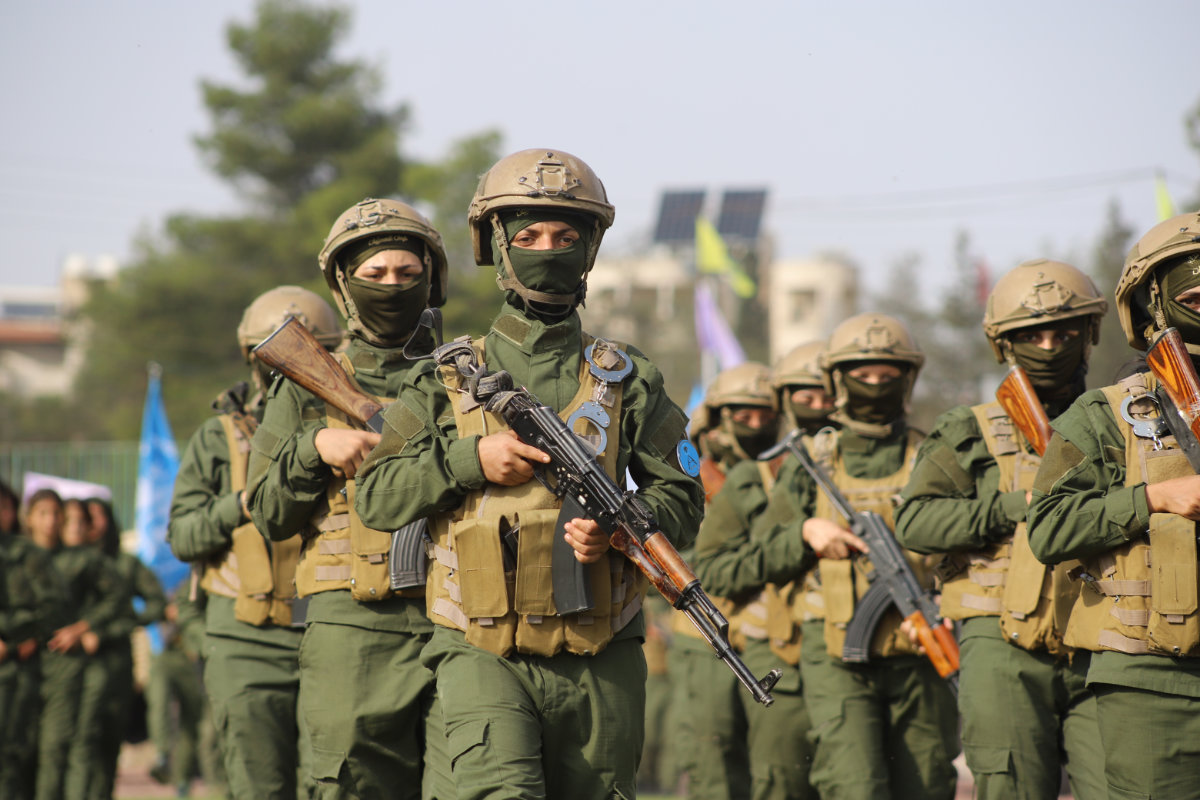
Syrian female soldiers parade in opposition-controlled territory in northern Syria. (photo by Ali Ali)
“While Germany, France, Italy and especially the UK are more focused on how Turkey can control the gateway to Europe and act as a 'continental bouncer' for refugees from the Middle East and West Asia, the US is more focused on denial. Again, Russia and Iran have full access to all of Syria for strategic reasons, such as access to the Mediterranean Sea and a 'Shia land bridge' from Tehran to Beirut,” Redcrow said.
“The current status quo is far more beneficial to Washington than any reconciliation would be, as it would also threaten the northeastern parts of Syria, where the US military is embedded with its most reliable military partners against Daesh in the SDF. So Turkey would not get any green light to threaten American interests.”
In February, the US House of Representatives passed the Assad Regime Anti-Normalization Act of 2023, which prohibits any normalization with Assad. In a post on social media platform X on July 12, the bill's author, MP Joe Wilson, expressed his disappointment at Erdogan's calls for normalization, likening it to “normalization with death itself.”
Although there may be little chance of reconciliation succeeding at this point, the approximately 3.18 million Syrian refugees living in Turkiye view even rumors of normalization with fear and dread.
“People are very afraid,” Amal Hayat, a Syrian mother of five living in southeastern Turkiye, told Arab News. “Since the rumors (of reconciliation) started, many people do not even leave their homes. Even if their bosses beat them at work, they are afraid to say anything for fear of being deported.”
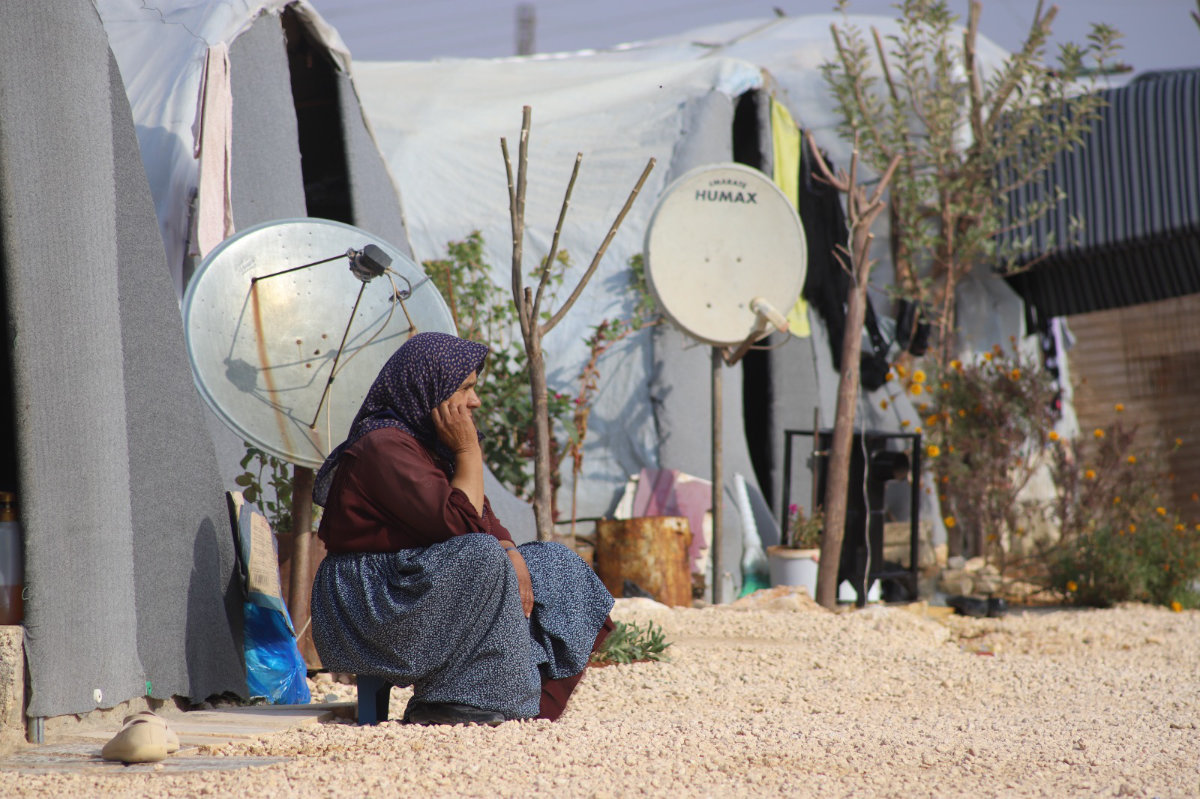
A Syrian woman is spotted in a refugee camp near the Syrian-Turkish border. (photo by Ali Ali)
According to Human Rights Watch, Turkish authorities deported more than 57,000 Syrians in 2023.
“A forced return would affect us a lot,” Hayat said. “For example, if a woman returns to Syria with her family, her husband may be arrested by the regime. Or if a man is deported back to Syria and his wife and children stay in Turkiye, how will they cope? It's difficult. Our children can study here. They have stability and security.”
Fears of deportation have been compounded by waves of violence against Syrian refugees that have swept through southern Turkey in recent weeks. On June 30, residents of the central Turkish province of Kayseri attacked Syrians and their property.
Anti-Syrian sentiment in Turkiye is partly due to economic problems, where Turks see underpaid or even unpaid Syrians as a threat to their job prospects.
“The Turks are very happy that we are coming home,” Hayat said. “It's not early enough for them.” We all live under increased levels of stress. We just pray that they (Assad and Erdogan) don't reconcile.”

